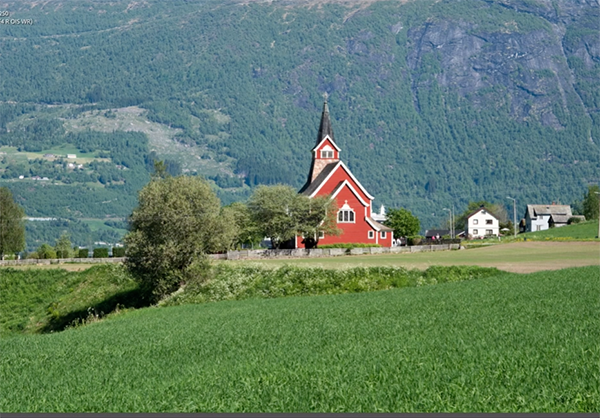Ninja’s newest innovation can turn your air fryer or pizza oven into a smart appliance – here’s how
A snazzy new cooking tool, did you say?
Levels and Curves are among the most important and basic post-processing tools, but do you understand the difference and when one method works better than the other for optimum results? If not, all your questions will be answered by watching this seven minute tutorial designed for beginners.
This tutorial comes to us from Amateur Photography TV, the YouTube channel of the world’s longest running consumer photo magazine—published weekly in the UK since 1884. Today’s episode takes a deep dive into Curves and Levels, explaining how each tool works and when to employ one or the other to take your photo editing to the next level.
As instructor Rod Lawton says, “Whether you’re adjusting contrast, fine-tuning brightness, or perfecting colors, understanding these powerful tools will give you greater control over you edits. You’ll also learn whether or not it’s necessary to use both for certain tasks.

This primer describes the ins-and-outs of these tools for users of both Capture one and Lightroom and begins with the former. We encourage you to watch the entire lesson because of the similarities involved, but if you’re only concerned with Lightroom just skip to the 4:32-minute mark of the video.
Lawton’s demonstration image is a landscape scene that includes a pretty church in the middle of the frame, with some imposing hills lurking behind. It was shot with a telephoto lens on a hazy day, and the problem is a general lack of contrast. Lawton explains that “Unlike Capture One which offers both Levels and Curves adjustments, Lightroom simply has a Tone Curve.”
With Lightroom’s Tone Curve panel open Lawton asks an obvious question: “Can we use this single panel to achieve the same results we can get from both Levels and Curves adjustments in Capture One?” His answer is an unequivocal “yes” and he demonstrates the step-by-step process for getting the job done in the final two minutes of the video.

As you’ll see by comparing Lawton’s before/after images the process is straightforward and very effective. He first drags the Curve down while watching Lightroom’s histogram then demonstrates addition controls within the panel.
Lawton describes his process like this: “Instead of chopping off the lightest and darkest parts of the photo like we did earlier with the Levels dialog, we simply suppress the shadows so that the detail is still there but they’re darkened down and made a bit deeper.” Similarly, you can add another control point and brighten up the highlights without blowing them out.
There’s a bit more required to finish the impressive transformation, and Lawton walks you through the simple technique. Once the video concludes take a look at the tutorial we featured from another image-editing expert who demonstrates the difference between Lightroom’s “Capture Sharpening” and “Output Sharpening” and which tool to use when.
Do you have a lens that rubs you the wrong way because the degraded rubber on the barrel is faded? If so, you can easily restore it to its former glory by watching this six-minute from the Be More, Do More, Have More channel.
Just to be clear, we’re not talking about lenses with sticky rubber that requires a different fix, but what’s essentially a cosmetic issue; namely, rubber with a flat, white, unsightly appearance. Today’s instructor Shawn Asala has done his research and experimentation with several methods and he finally hit on an effective trick for making lens rubber look spanking new..
Asala is a British pro and describes the quick tutorial like this: “In this video I share my findings and give you a little demonstration that makes my Sigma 16mm f/1.4 lens look better than ever.” Best yet, he says his method is safe and provides lasting results.

This episode begins with an important warning about other solutions you may have heard in the past, like using acetone, nail polish remover, or alcohol to get the job done. But be forwarded, because these harsh chemicals do more damage than good by drying out the rubber and will definitely make your problem worse.
Asala also notes that applying plain water may seem to be effective at first. But your hopes will quickly fade like the rubber on your lens as soon as the liquid dries. So what’s the magic elixir? Just go into the kitchen, grab a bottle of dish soap and get to work.
Photographers familiar with this trick often use a rag or Q-Tips to clean a lens barrel, but Asala recommends an old toothbrush instead. Just be sure it’s one with soft bristles to avoid scratching the degraded rubber. You can speed up the process on oversized lenses by using a soft paint brush instead.

This may sound obvious, but we’ll say it anyway: Apply the dish soap to the brush, not directly to the lens. If the rubber is seriously faded you may have to repeat the process for perfect results But as you’ll see, Asala’s old Sony lens now “looks amazing and almost new.”
There are many more simple tips and tricks on Asala’s interesting YouTube channel so take a look and subscribe.
And speaking of lenses, be sure to watch our recent review of Tamron’s impressive 28-300mm f/4-7.1 all-in-one lens for Sony full-frame mirrorless cameras.
